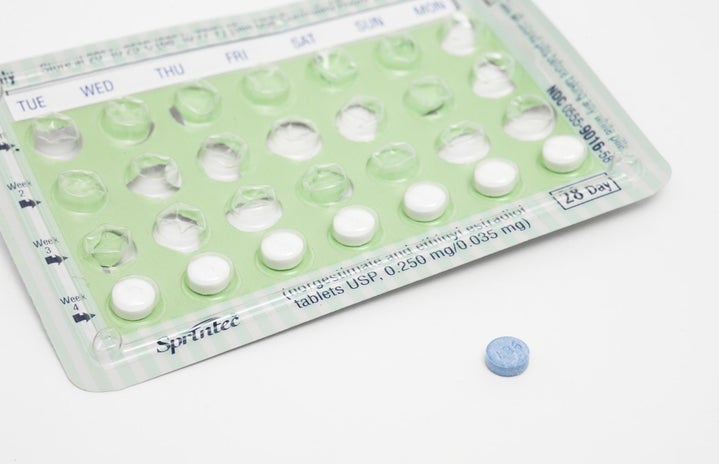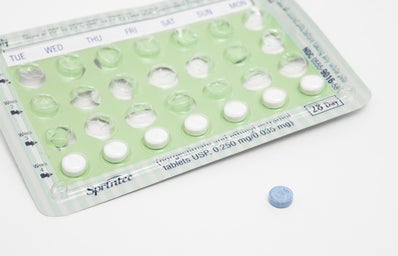What is an intrauterine device (IUD)?
An IUD is a contraceptive device which is inserted into a person’s uterus to act as long-lasting birth control 1. It is a tiny T-shaped like contraption, that was honestly kinda cute when my doctor showed it to me. The IUD can last, depending on the model, between 3 and 12 years as an effective contraceptive method 2. The models vary by hormones and size. The nonhormonal IUD, called the Paraguard, is copper and lasts the longest. The other models are hormonal and generally smaller than the Paraguard. I personally opted for the Skyla model, which would last 3 years and was the smallest option.
What exactly does an IUD do?
Besides the obvious physical barrier that the IUD provides, hormonal IUDs act to thicken the cervical mucus, making it hostile to sperm. The hormonal IUDs may also suppress ovulation, so an egg may never descend into the uterus 1. So all around, IUDs are like the ultimate warrior of birth control. The IUD is said to be 99.9% effective at preventing unwanted pregnancies 1.
The actual process of getting an IUD was fairly simple. I made an appointment to see if I was eligible to get an IUD and talk about which option would be best for me. At this appointment, I took a pregnancy test and got screened for STDs. The pregnancy test was covered, by I did have to pay for the additional screening. My doctor did a standard gynecological exam and said that I was a fine candidate. She said that my uterus was still tiny from not having kids, and so I should opt for the Skyla because it lasts only 3 years and is the smaller option.
Once my STD screening came back clean, the office called me to let me know they would be ordering my device. I remember it coming in fairly quickly, almost a week later they called again to set up an appointment for my procedure. I stopped taking my oral contraception and waited. For unrelated reasons, I had a severe allergy that put me on a steroid pack. Usually, during the procedure, the physician will give the person a shot to help with the pain, but because of the steroids I was on, I could not have the shot. She told me that it would likely cause a lot of stomach and intestinal discomfort and that I would be perfectly fine without the shot.
The day of my procedure, I found a friend to take me home from the appointment in case I was in too much pain. An hour before the appointment, I took a dose of Advil. During the procedure, it was a full house. There was my physician, two nurses, an observing medical student all in a tiny exam room. I felt like I was in one of those Renaissance paintings where a woman gives birth and the entire royal party watches. One of the nurses held my hand so I could squeeze, while another one put a hot pad on my abdomen and a cold rag on my neck and forehead. My doctor narrated what she was doing; at first, there was at first the usual discomfort of the speculum. Then, when she had to open my cervix, it was like pinching and cramping as I had never felt before. I squeezed that nurse’s hand so hard I almost felt bad about it. Almost. But, it was over quickly. I did not cry or scream by any means, and I only had the Advil in my system. There was still a lot of intense cramping. They gave me a piece of chocolate and Gatorade and let me lie down in the room to recover a little. They also gave me a cute little tote that had a period kit: tampons, pads, feminine wipes, microwavable hot packs.
That night, I lied in bed and kept the hot pad on my abdomen. The cramping persisted for almost 3 days but eventually subsided. About a month later, before my first scheduled period, I was hit with the worst cramping I have ever felt. It was worse than during the procedure. I had to excuse myself from class to go to the bathroom because I broke into an awful sweat and could not stop crying. I must’ve been in there for half an hour. I made an appointment with my doctor to check things up, and she said it looked fine. She explained that the pain was probably just discomfort from ovulation– something I was not used to because of my history of oral contraception.
I enjoyed having the IUD because it essentially stopped my period, and I did not have to take a pill every day around the same time. It was freeing. Unfortunately, the cramping persisted for months. In June, I made an appointment with a new doctor in my hometown to check on things. She did a pelvic ultrasound and found that my IUD was poking into my cervix. She fixed its placement under ultrasound guidance and gave me antibiotics and painkillers. Two weeks later, the cramping persisted, so I had the device removed.
Despite my issues with the IUD, many people have little to no problems, even those who have tiny, a child lacking uteruses. There are plenty of other birth control options including, but not limited to: the pill, the implant, condoms, the diaphragm, the depo shot. It’s important to always consult with your physician when deciding what is best for you.
Do you have to be on your period to get an IUD?
You do NOT have to be on your period to have an IUD inserted. Some doctors think it is easier, but it is in no way a requirement.
What menstrual products can you use with an IUD?
You can still use tampons. The device goes in the uterus, not the vagina.
Can IUDs be used as emergency contraception?
Only the Paragard can be used as emergency contraception 1.


